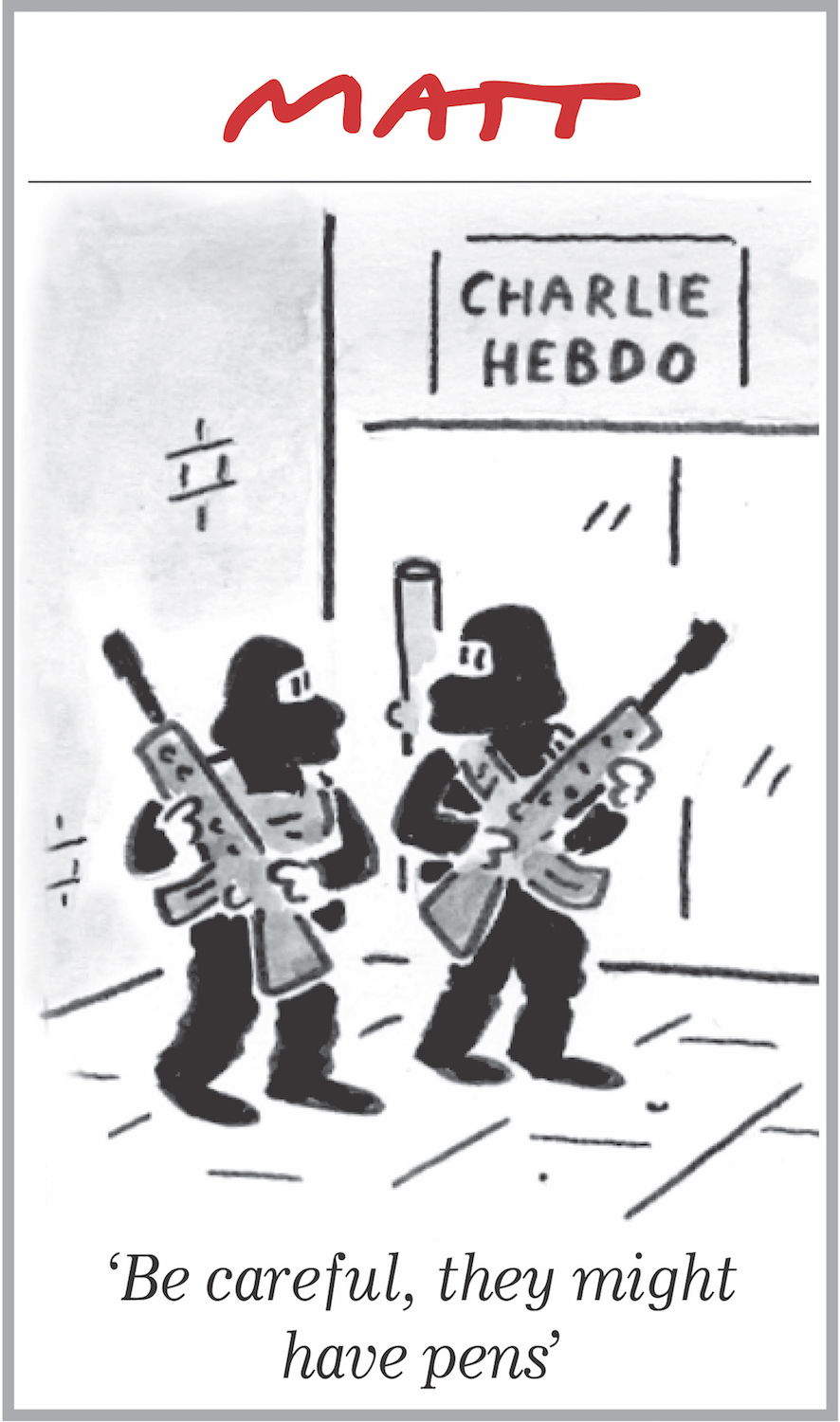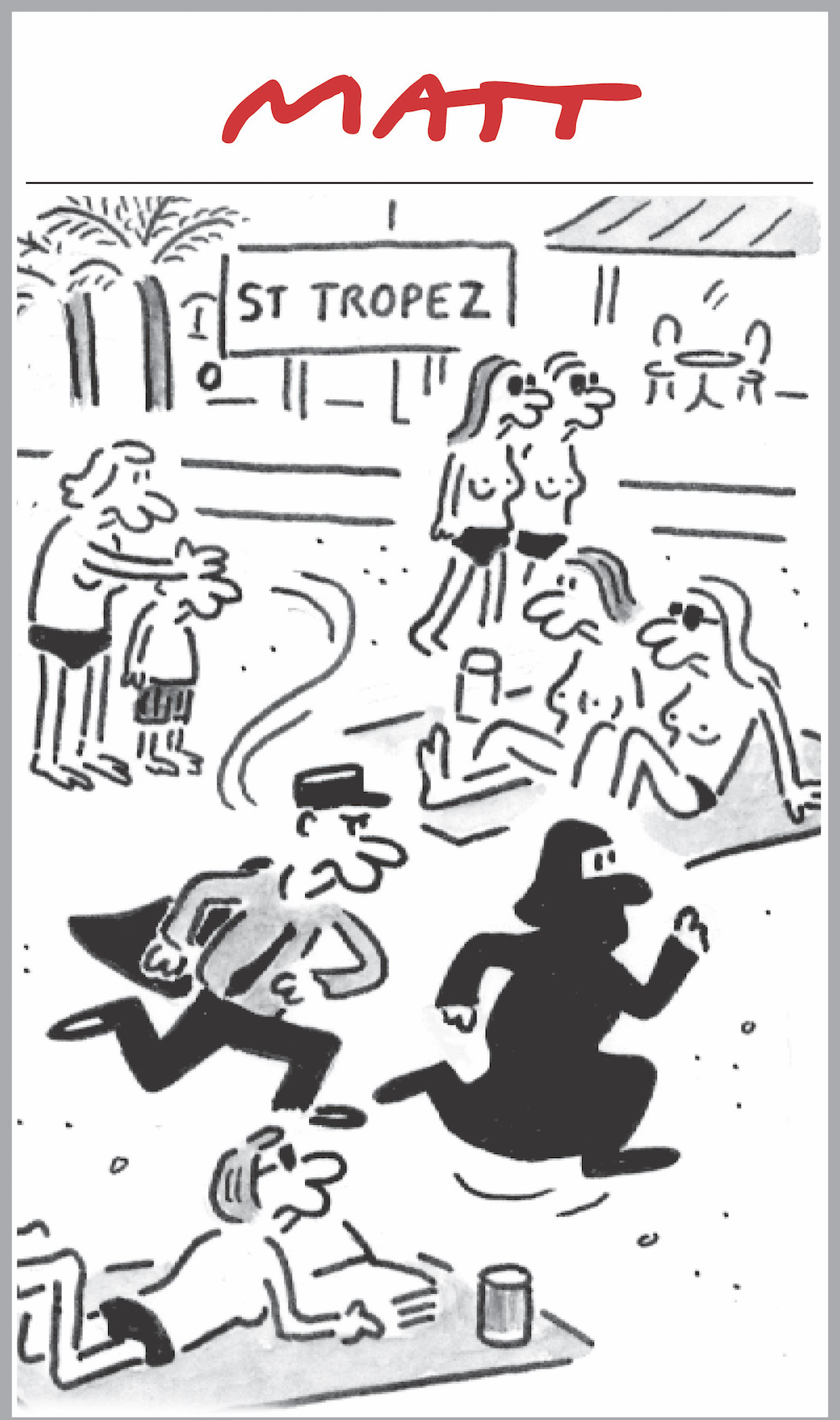Today (26 February), The Telegraph is celebrating 30 years since cartoonist Matt Pritchett, known under the pen name 'Matt', published his first cartoon.
Since Matt's first work appeared entirely in print in The Telegraph in 1988, he has drawn more than 8,000 cartoons for the newspaper, "capturing the absurdities of everyday life through sharp humour and a kind touch".
For his 30th anniversary, we caught up with Matt to find out if his work has changed over the last three decades, how social media has influenced cartoons and how people discover them, and what a day in his life looks like now.
"I'm only ever looking 24 hours ahead, always just worrying about the next day's cartoon, so it feels like the last 30 years have raced by," Matt told Journalism.co.uk.
What has changed in your work since you started drawing cartoons for The Telegraph?
"My job is still the same in that I have to see what's in the news, try and think of something that will make Telegraph readers laugh and then draw the final cartoon. But I think life has speeded up a lot and stories tend to move on much more quickly. Especially with subjects like Trump, there is an enormous amount on social media if he tweets or does anything, so I have sometimes shown someone a cartoon or thought of a joke and they will say 'oh, everyone on Twitter is saying that'. And that wasn't the case before – cartoonists and comedians would comment on the news, but now everyone is doing it, so I do try to make sure that the jokes I'm making for The Telegraph haven't been on social media for 24 hours already.
What has been the impact of social media, and the way in which people now discover your cartoons online and on platforms like Twitter?
"Because The Telegraph tweets my cartoons, you do get a sort of instant reaction to it, how many people have retweeted it or liked it. If you were working for a newspaper in the old days, you might have received a few letters but there was nothing like the instant reaction you get now.
"When I started 30 years ago, you could assume that you weren't to everyone's taste, some people will love you and some people won't like you. But then social media comes along and you're in no doubt about who dislikes you! Initially, it's a huge shock, but you sort of get used to the idea that there can be a backlash to something you have made, 24 hours later.
"I think [engaging with it] would be madness. I believe it was Mark Twain who said 'never argue with a fool as onlookers may not be able to tell the difference', and that's my rule with Twitter, really.
"The worst I get is that people say they're sick of me or of seeing my cartoons being shared, so nothing threatening, but this has made much more sympathetic towards people, and especially female politicians, who get seriously abused and trolled on social media."
Memes have become one of the most popular ways in which people react to news and events on social media, do they play any role in how you approach your cartoons?
"There was one in particular where the photographer had taken a picture of a weasel jumping on the back of a woodpecker, so I was trying to think of a joke about it, and there were new memes coming out by the second. I thought that as a cartoonist, you can play around with the image... I can have the weasel talk and I can draw it in a slightly different way, so I did a joke that I hoped nobody had made.
"You can only do your best but it is a new challenge. It does mean that you can't be lazy and do something obvious that's popped into your head, because someone certainly would've already made that joke."
Do you ever think about your cartoons going viral?
"The only one I am aware of that went bigger than any other one was when the Charlie Hebdo attack happened. I hardly ever do cartoons that touch on a serious subject, but I felt that, as a cartoonist, I had to react. I spoke to the editor about it and he was incredibly helpful and supportive, so I did do a cartoon on it which was very popular and seemed to have an effect like no other because it was still quite raw and of the moment.

"For me Charlie Hebdo was unique because it was an attack on cartoonists. Many cartoonists feel like they are commentators on events, and that if something serious happens, they should make a visual comment on it. But I'm not like that, I feel my role is just to try as hard as I can to make people laugh, so I avoid any subject that is in questionable taste."
What does a day in the office look like for you?
"I get in at about eight, and I look at all the papers to try and get a sense of what is going to be in the following day's paper, also chatting with the news desk about what they have going on. Then I write down every subject I could possibly come up with a joke on and I try and think of as many jokes as I can. The plan is that I should have six that are worth showing by the middle of the afternoon and then I narrow it down to the best two, take them to the editor and he has the final say. That hasn't really changed for the last 30 years."
What is your favourite cartoon that you have drawn?
"It was when the French banned the burqa. It's a very sensitive subject, but I thought that if you were wearing a burqa you might be chased by the police, and you might be chased by them through a topless beach in Saint Tropez, and that is what I drew.

"I think it was visually funny, it dealt with a serious subject in a lighthearted way and it managed not to offend anyone. It was like tiptoeing through a minefield, but I pulled it off."
For more on Matt's cartoons, check out this day in the life video, as well as this gallery showcasing 93 of his favourite cartoons from the last three decades.
Free daily newsletter
If you like our news and feature articles, you can sign up to receive our free daily (Mon-Fri) email newsletter (mobile friendly).
Related articles
- Six self-care tips for journalists to stay sane during the general election
- Tick the right inboxes: six tips to save a failing newsletter
- RISJ Digital News Report 2024: Three essential points for your newsroom
- How to discover value and build loyalty with newsletters
- Seven tips for using LinkedIn as a freelance journalist










